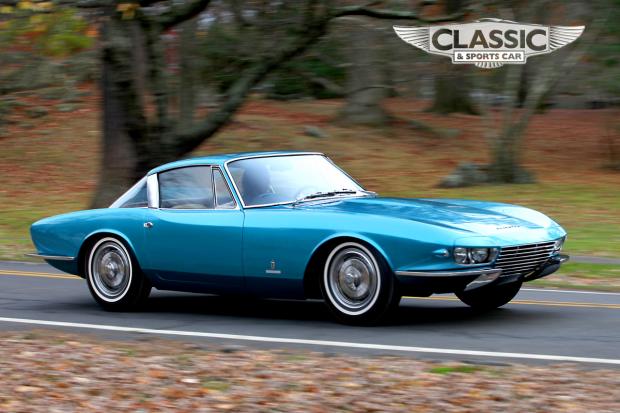
When General Motors sent a Corvette chassis to Pininfarina in 1962, the result was the sensational Rondine Coupé. Mick Walsh salutes Tom Tjaard's sleek masterpiece.
For any car to stand out at the 1963 Paris Salon, it had to be something really special. The prestigious French event, staged for its second year at the Porte de Versailles exhibition centre, was rich with dazzling new designs from both sides of the Atlantic. The home industry had little fresh to offer, but the show-stoppers heralded the dawn of the mid-engined supercar with ATS and Ferrari 250LM prototypes, while America proved that it could do super-chic as well as anyone with the sharp Buick Riviera. But visitors walked by all of these – past the radical Chrysler Turbine and the stylish Chapron Le Dandy – for a glimpse of a turquoise beauty on the Pininfarina stand. There, making its debut and its only show appearance, was the sleek Corvette Rondine, an elegant coupé that dressed American fuel-injected brawn in the sharpest bespoke Italian steel suit. No Corvette ever had such class, from its long, pinched profile to the hand-stitched leather interior. Minimal details, with slimline bumpers, a quick-fill petrol cap, push-button doorhandles and pop-up headlights, merely enhanced the Rondine’s beauty. The dashboard retained the production model’s jet-age pods, but leather tops and headlining – plus a special teak-rimmed steering wheel – added to the Rondine’s well-groomed style.

Like many styling studios, Pininfarina rarely credited its designs to individuals, but with time the Rondine’s crisp form became associated with a young Michigan-born recruit, Tom Tjaarda. “I’d been tempted to Europe by an offer from Ghia,” he recalls, “but they were having a tough time, so in the early ’60s I started looking around for another job. It was a close thing whether I’d stay in Italy or return to the US, but a friend provided a contact at Pininfarina and I joined in ’61. It was totally different to Ghia, where Luigi Segre encouraged competition among designers. The emphasis at Pininfarina was on getting the job right. Sergio followed each project all the way through and wouldn’t let anything go out of the door until it was correct. The atmosphere was much more relaxed and I could immediately see why they were so successful.”









